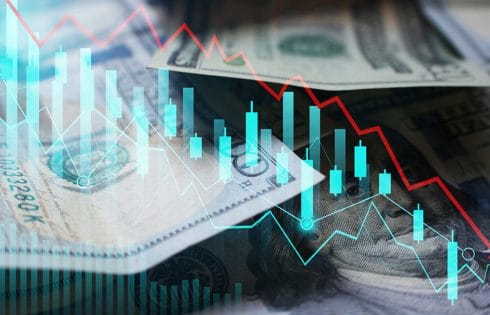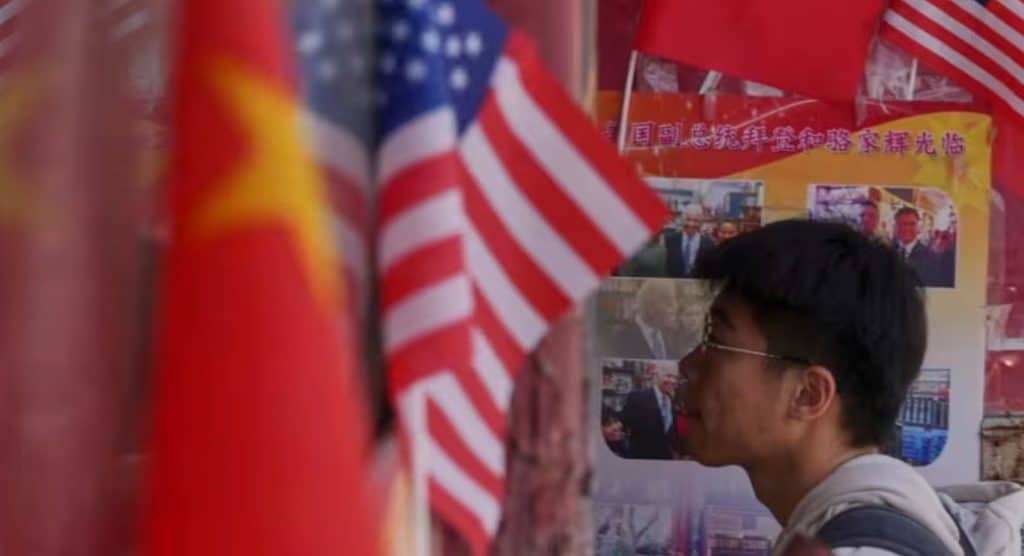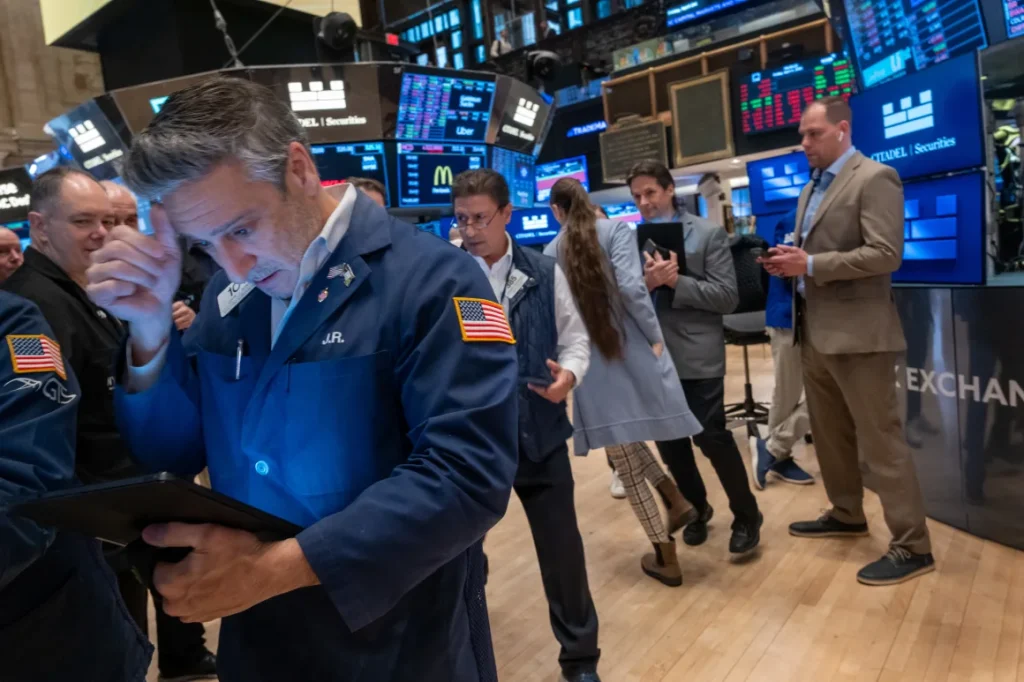Hong Kong’s Hang Seng plunges nearly 10%, mainland’s China CSI 300 slumps about 5% on trade war worries




It comes as no surprise that managing finances and money can be stressful. Like most types of stress, financial stress can impact your sleep, physical and emotional health, relationships, performance at work and family life.
April is National Financial Capability Month, highlighting the importance of having a basic understanding of how to handle money matters like paying bills, managing debt and saving money. This knowledge is essential when it comes to reducing financial stress and making informed financial decisions for you and your family.
The MHealthy website includes information, programs and university and national resources to help support your financial well-being. Learn about:
Register for the new Money Matters virtual gameboard and boost your knowledge around money and personal finances – one square at a time. Over 28 days, journey along the path completing quick, daily tasks designed to test your knowledge, raise your awareness and help you reflect on your current financial habits. A new task is unlocked daily with topics ranging from budgeting and saving money to managing debt and improving credit scores.
Available to active, benefits-eligible faculty and staff and their spouse/other qualified adult enrolled in a U-M health plan. Sign up today on the MHealthy Portal.
In challenging times, it can be difficult to know where to turn for help. The MHealthy Resource Coach Program helps U-M and Michigan Medicine employees find practical solutions to difficult situations. Assistance comes in the form of case management services, connections to community and local resources, and in some cases, financial support for employees experiencing a financial crisis or other personal hardship.
TIAA and Fidelity, U-M’s trusted administrators of its Retirement Savings Plans, are available to meet with you virtually, by phone or in person. Their specialists are trained to help you create a financial plan and take steps toward your goals. And, during National Financial Capability Month, both are also offering several web-exclusive events, both live and by-demand.
The MHealthy Portal, available to benefits-eligible faculty and staff and their health plan enrolled spouse/OQA, includes online courses and self-guided programs focused on financial well-being, including:


Stocks are falling. Financial TV is rolling out the “Markets in Turmoil!” headlines. Uncertainty abounds over how much President Trump’s tariffs will impact the U.S. economy. Both the broader Nasdaq Composite and the big-tech heavy Nasdaq-100 indexes are now down by more than 12% from their early January peaks as investors take their money out of higher-risk growth stocks, further fueling people’s fears.
Not all stocks are falling, though. In times of uncertainty, investors tend to flee to safety in the form of low-risk dividend-paying stocks like Altria Group (NYSE: MO). The tobacco and nicotine giant is up almost 10% year to date and still sports a dividend with a 7% yield. With those facts in mind, should you buy Altria stock with $1,000 right now?
Altria is the parent company of Philip Morris USA, which primarily sells cigarettes in the United States under an array of brands including Marlboro, its best-selling brand by far. While cigarettes are still smoked widely, sales volumes in the U.S. have been declining for decades now, and they continue to. In the fourth quarter, Altria’s cigarette sales volume fell by about 8% year over year.
Despite that, Altria’s net revenue after excise taxes grew by 1.6% year-over-year to $5.1 billion last quarter as the company boosted its prices on packs of cigarettes by more than enough to make up for the lost sales. Its pricing power has allowed it to keep revenues rising in the face of volume declines for many years, while also increasing profit margins for the smokeables division. In 2024, smokeables operating income grew 1.4% to $10.8 billion, making up the majority of Altria’s profits. With a 60% operating margin, the smokeables division is one of the most profitable businesses in the world.
Over the long term, Altria plans to significantly grow its smoke-free division, which includes nicotine pouches, electronic vaping, and potentially other products like heat-not-burn devices. By 2028, management wants to double sales of its smoke-free products to $5 billion, which would be a sizable percentage of Altria’s current annual revenue of $20 billion. However, the company is well behind rivals such as Philip Morris International, where smoke-free products are close to making up 50% of overall sales right now. This will be an important segment for investors to track for the rest of the decade.
Altria’s underlying business is highly profitable, but it’s a low-growth market. The smoke-free products segment has some promise, but for now, it’s a small part of the operation. The best feature of this stock for investors might be management’s capital return strategy.
Through a combination of share repurchases and dividend hikes, Altria Group consistently grows its per-share payouts to shareholders every year. Over the last 10 years, the number of shares outstanding has fallen by 14%, and buybacks accelerated in 2024. Its dividend per share steadily climbed, and is up around 100% in the last 10 years; the current quarterly payout is $1.02 per share.
Management plans to grow its dividend per share at a mid-single-digit percentage rate annually (read: around 5% a year) through 2028. With consistent share repurchases and healthy cash generation still coming from the cigarette business, I think this is an achievable goal.

Buying shares of Altria Group stock is an easy way to get dividend income and dividend growth over the next five years. It is a perfect stock to add to a portfolio to provide a counterweight to the growth and technology names that may be sinking at the moment.
Buying $1,000 worth of Altria Group stock will give you around $70 in dividend income every year, based on the current dividend yield. With free cash flow per share of $5.01 — the fuel for dividend payments — and a forward annual dividend per share of $4.08, Altria has room to grow payouts by 5% a year for five years even if its free cash flow per share remains stagnant. However, over the last 10 years, Altria’s free cash flow per share has grown by 103%, outpacing its dividend per share growth.

OKLAHOMA CITY (KFOR) – An Oklahoma City financial advisor says he believes Oklahomans looking at the impact stock market changes are having on their savings account will have nothing to worry about in the long term.
The Dow Jones plummeted more than 2,200 points Friday after an already unprecedented drop of nearly 1,700 points the day before.
The big drop, a part of the fallout from President Donald Trump imposing sweeping tariffs on some of the United States’ biggest trade partners. China is the latest to slap the U.S. with retaliatory tariffs.
“It’s definitely one of the fastest drops the market’s seen in history,” said Oklahoma Chartered Financial Analyst Sam Jurrens, Founder of Even Herd.
Jurrens equated the historical nature of the incident to the coronavirus pandemic, saying it’s a situation that will be remembered similarly due to the massive amount of ongoing confusion.
“You had governments starting to mandate shutdowns and those things, a very unclear picture of what’s going to happen, and in those cases, that’s where the market panics,” said Jurrens.
Jurrens said the dramatic market drop can likely be attributed to Trump’s initial tariff plan being much more extreme than what investors likely anticipated, but that it doesn’t mean the situation might not end in a beneficial and positive outcome.
Jurrens says he understands Oklahomans looking at their retirement savings may be concerned. News 4 asked him if they should be worried if they’re noticing big changes.
“If you’re looking at retirement and it’s money you’re not going to touch for at least, you know, five, ten, even 20 years or more, and in that case, it’s not something you should be overly worried about,” said Jurrens.
News 4 pressed Jurrens further about retirees looking at a shorter timetable.
“If it’s a retiree, very short term, you know, you need the money in a month, or a month or a year, something that short term it shouldn’t be invested in the first place, probably to be able to take that kind of loss,” said Jurrens.
Jurrens said it’s typical for the market to see ebbs and flows, and advising someone to take a knee-jerk approach with their money is something he’s not prepared to do. He says he believes the market will bounce back.
“You can play it as dire as you want, and five years from now, I still don’t think it’s going to be much of a discussion, no matter what the outcome is,” said Jurrens.



